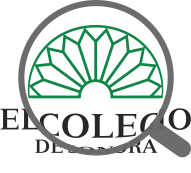| dc.contributor.author | Haro, Jesús Armando | |
| dc.coverage.spatial | MX-SON | en-US |
| dc.creator | HARO ENCINAS, JESUS ARMANDO; 120431 | |
| dc.date | 2008-01-01 | |
| dc.date.accessioned | 2022-06-28T19:42:47Z | |
| dc.date.available | 2022-06-28T19:42:47Z | |
| dc.date.issued | 2008-01-01 | |
| dc.identifier | https://regionysociedad.colson.edu.mx:8086/index.php/rys/article/view/532 | |
| dc.identifier | https://doi.org/10.22198/rys.2008.2.a532 | |
| dc.identifier.uri | https://regionysociedad.colson.edu.mx:8086/index.php/rys/article/view/532 | |
| dc.identifier.uri | https://doi.org/10.22198/rys.2008.2.a532 | |
| dc.identifier.uri | https://repositorio.colson.edu.mx/handle/2012/45763 | |
| dc.description.abstract | The main purpose of this essay is to illustrate the need to extend our theoretical and methodological frames in the study of ethnicity and health, deriving a specific case from the general in the epidemiological analysis by means of integrating cuantitative and qualitative data. With this aim, this paper first approaches the state of the art in the field of ethnicity and health, and proposes the convenience of distinguishing between three related fields: genotype, phenotype and ethnicity. Then some selected research results are presented in order to prove certain differences between the indigenous people of Mexico and those from the country's northwestern region. Finally, some reflections are elaborated from this exercise as conclusions, discussing the appropriateness of sociocultural epidemiology as analytical frame in the study of health of ethnically differentiated populations. | en-US |
| dc.description.abstract | El propósito central de este ensayo es mostrar la necesidad de ampliar nuestros referentes teóricos y metodológicos en el estudio de la relación entre etnicidad y salud, a partir de la premisa de particularizar el análisis epidemiológico mediante la integración de datos cuantitativos y cualitativos, en concordancia con el enfoque de la epidemiología sociocultural. Para ello, el trabajo aborda inicialmente el estado del arte para proponer la conveniencia de distinguir entre tres ámbitos relacionados: el genotipo, el fenotipo y la etnicidad. Enseguida se presentan algunos resultados selectos de investigación que pretenden señalar ciertas diferencias relevantes entre los pueblos indígenas del país y los de la región noroeste de México. Finalmente, se amplían algunas reflexiones emanadas de este ejercicio a modo de conclusiones y se examina la pertinencia de la epidemiología sociocultural como marco analítico para aplicarse en particular al estudio de la salud en poblaciones étnicamente diferenciadas. | es-ES |
| dc.format | application/pdf | |
| dc.language.iso | spa | |
| dc.publisher | El Colegio de Sonora | es-ES |
| dc.relation | https://regionysociedad.colson.edu.mx:8086/index.php/rys/article/view/532/573 | |
| dc.rights | Derechos de autor 2017 Jesús Armando Haro | es-ES |
| dc.rights | https://creativecommons.org/licenses/by-nc/4.0/ | es-ES |
| dc.rights | info:eu-repo/semantics/openAccess | es-ES |
| dc.source | 2448-4849 | |
| dc.source | 1870-3925 | |
| dc.source | región y sociedad; Vol. 20 (2008): Número especial 2 | en-US |
| dc.source | región y sociedad; Vol. 20 (2008): Número especial 2 | es-ES |
| dc.subject | Ethnicity and health | en-US |
| dc.subject | Sociocultural epidemiology | en-US |
| dc.subject | Indigenous health in northwestern mexico | en-US |
| dc.subject | Etnicidad y salud | es-ES |
| dc.subject | Epidemiología sociocultural | es-ES |
| dc.subject | Salud indígena en el noroeste de méxico | es-ES |
| dc.subject | Ciencias Sociales | |
| dc.subject.lcsh | Ethnicity and health | en-US |
| dc.subject.lcsh | Sociocultural epidemiology | en-US |
| dc.subject.lcsh | Indigenous health in northwestern mexico | en-US |
| dc.subject.lcsh | Etnicidad y salud | es-ES |
| dc.subject.lcsh | Epidemiología sociocultural | es-ES |
| dc.subject.lcsh | Salud indígena en el noroeste de méxico | es-ES |
| dc.title | Etnicidad y salud: Estado del arte y referentes del noroeste de México | es-ES |
| dc.type | info:eu-repo/semantics/article | |
| dc.type | info:eu-repo/semantics/publishedVersion | |
| dc.audience | generalPublic | |
| dc.identificator | 5 | |










